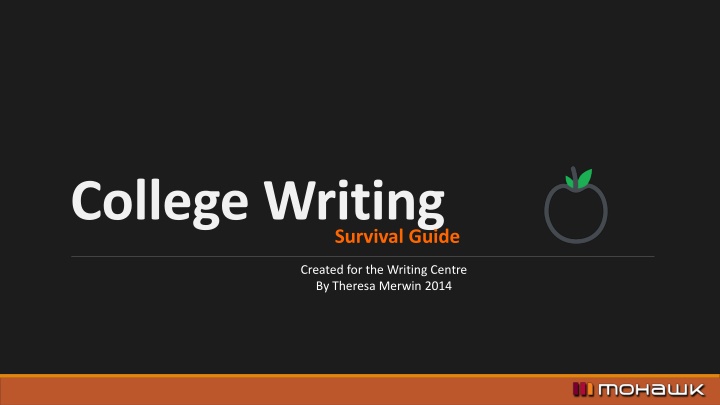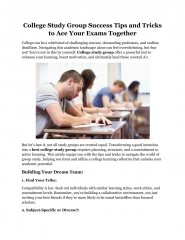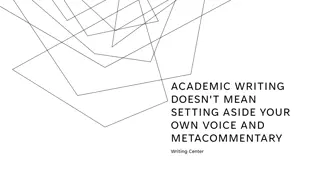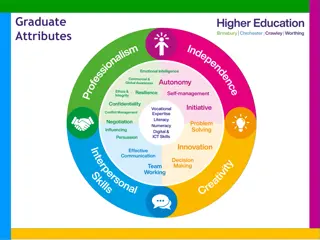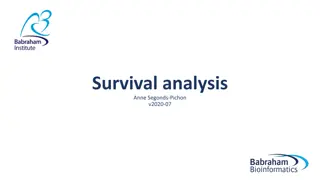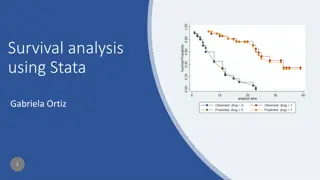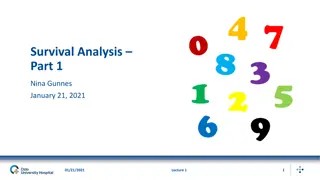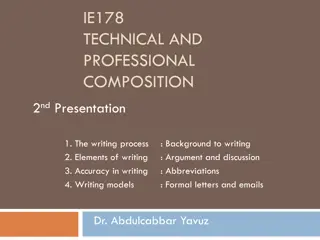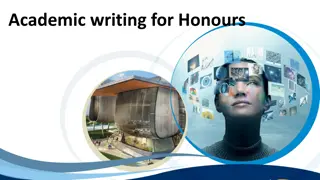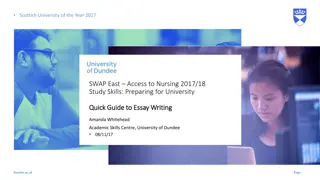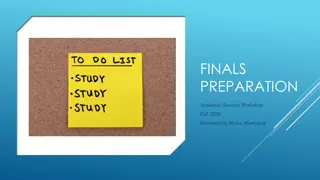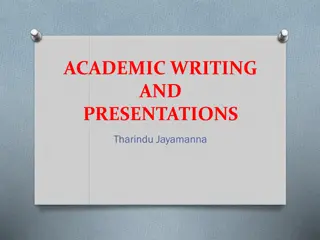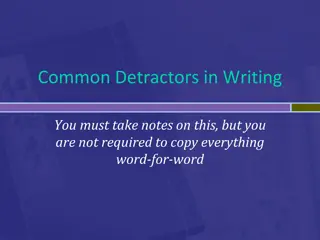College Writing Survival Guide: Essential Tips for Academic Success
Discover essential strategies for writing success, from preparing before classes start to understanding assignments and creating effective outlines. Learn how to brainstorm, organize ideas, and develop strong thesis statements. This comprehensive guide will equip you with the tools you need for effective college writing.
Download Presentation

Please find below an Image/Link to download the presentation.
The content on the website is provided AS IS for your information and personal use only. It may not be sold, licensed, or shared on other websites without obtaining consent from the author.If you encounter any issues during the download, it is possible that the publisher has removed the file from their server.
You are allowed to download the files provided on this website for personal or commercial use, subject to the condition that they are used lawfully. All files are the property of their respective owners.
The content on the website is provided AS IS for your information and personal use only. It may not be sold, licensed, or shared on other websites without obtaining consent from the author.
E N D
Presentation Transcript
College Writing Survival Guide Created for the Writing Centre By Theresa Merwin 2014
Before Classes Start Find out about the different services offered Learning Support Centre, room C122 Address any areas that need improvement or were identified by your Assessments for Success before you begin classes
Understanding your Assignment Ensure you read the entire assignment outline before beginning Make sure you understand ALL the assignment requirements and goals If you re unsure about anything, ask your instructor immediately
Creating an Outline Plan out how you are going to approach the assignment and the steps you will take Step 1: Brainstorm create a brainstorming tree with your ideas for the assignment Research the services offered Being prepared for College Ask Be questions organized Take a campus tour
Idea Tree Thesis Main Idea Main Idea Main Idea Support Support Support Support Support Support
Outline Thesis Support Support Support Argument 1 Support Support Support Argument 2 Support Support Support Argument 3
Compare/Contrast Thing A Thing B Characteristic 1 Characteristic 2 Characteristic 3 Characteristic 4
Cause/Effect Support Support Support Support Support Support Support Support Effect Effect Cause Cause Cause Effect
Persuasive Reason Argument Explanation Reason Argument Explanation Thesis Reason Argument Explanation Reason Argument Explanation
Idea Web Support Support Support Support Main Idea Main Idea Thesis Main Idea Main Idea Support Support Support Support
Creating an Outline cont. Step 2: Decide on a thesis or main idea This is the idea, topic or argument that your written assignment will focus on Step 3: Research if necessary Research your topic if your instructor has made it a requirement for the assignment or if you think it will improve your understanding Consult library staff or TheBRAIN, the library s website, for how and where to find resources Click me! head icon hyperlink attached
The Writing Process Step 1: Organize your ideas and your research Create the broad structure of your paper what your main ideas, points and arguments will be and the order Step 2: Draft Create a draft version of your assignment including an introduction, body and conclusion Remember, this is just a draft so things can be changed Keep referring to the requirements of the assignment to make sure you are meeting them
The Writing Process cont. Step 3: Revising Improve the focus and structure of your assignment by ensuring each paragraph reinforces the main idea introduced in your introductory paragraph Sharpen your paragraphs by ensuring you have a clear topic sentence at the beginning Make sure you are only including supporting points relevant to your topic sentence Your introductory paragraph should contain your thesis or main idea, and a sentence for each of your body paragraphs (commonly 3)
The Writing Process cont. Step 4: The Final Copy Once your draft version has been revised for structure and proofread for grammar and spelling, you can begin to finalize your assignment Verify that you are using an appropriate tone for your paper avoid using informal words, contractions (eg. can t, could ve, wouldn t) and first person (eg. I, me, my) unless instructed otherwise Follow proper presentation guidelines from the outline, such as line spacing (commonly double), font style and size, cover page and margins
Referencing If you have used any outside resources in your paper, you MUST use references according to a specific style guide (commonly APA) You can find style guides for how to reference resources at the Mohawk College Library, or in the Writing Centre References are used in your paper as in-text citations and a separate page at the end of your assignment listing all resources used
